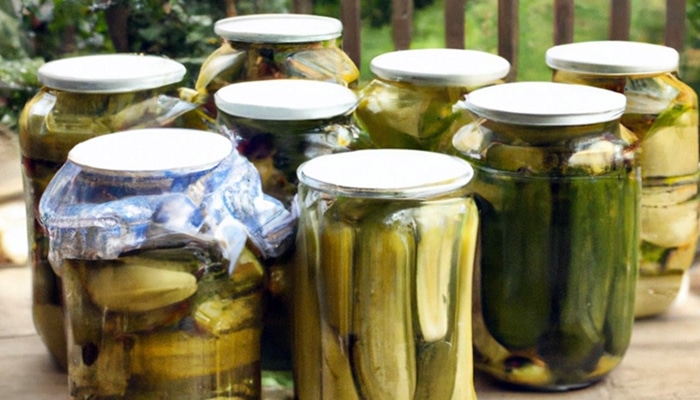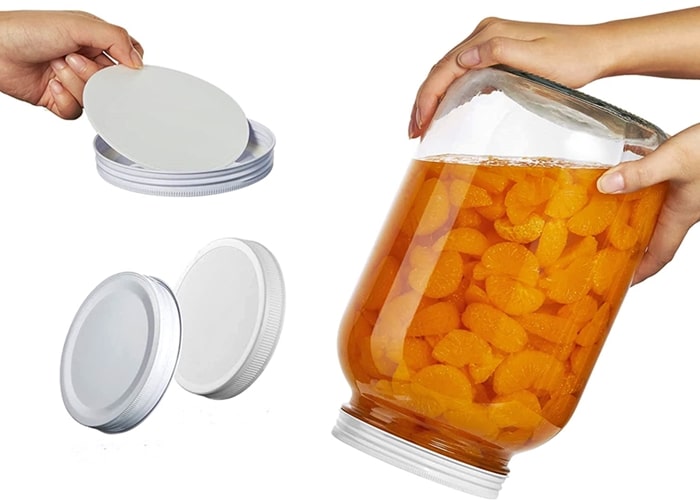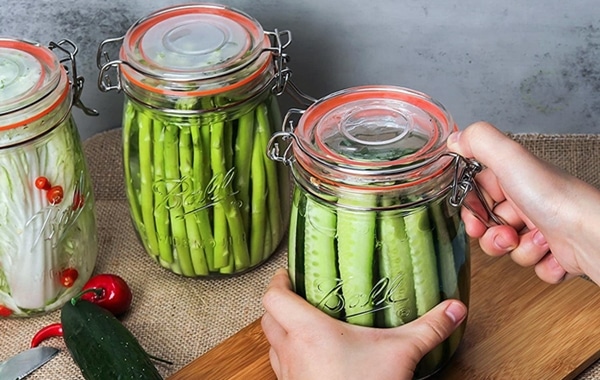Pickles are a healthy and delicious snack, but they can be expensive to buy. Making pickles at home is a great way to save money, get a fresh, homemade taste, and experience the satisfaction of making your own pickles.
However, these pickles require a little bit of special care. You must protect them from the air. Light will break down the sugars in the brine and also oxidize the spices. So, you need a jar to store them in but they might get contaminated.
To avoid this, you will need to sterilize the jars with boiling water for a few minutes. This process will ensure that the flavor of your homemade pickles won’t get diluted. This blog will show you how to sterilize jars for pickles.
Why Should We Sterilize Pickles Jars?

Food safety is of utmost importance. By sterilizing food jars, you can ensure that they are safe to eat. Many people sterilize their jars of pickles to avoid any potential contamination of the food. However, there are a few reasons why you should sterilize jars for pickles.
- Sterilizing jars is a way to kill bacteria and other microbes that might be in jars.
- Sterilization will prevent the jars from becoming contaminated with mold, which can cause food poisoning.
- It also helps to prevent spoilage.
- Sterilization will make the pickles last longer.
- Sterilizing jars is a way to prevent food poisoning.
- It will prevent the jars from becoming contaminated with botulism, which can cause serious illness.
- Lastly, sterilizing jars is a way to ensure the safety of food.
Some people don’t sterilize their jars for a variety of reasons, but it is important that you make the effort to sterilize jars for pickles. Cold-pack or hot-pack pickles can be canned for up to one year.
What to Inspect Before Storing and Sterilizing Your Pickles Jars?

Before you sterilize your pickles jars, it is important to inspect the jars first. it’s important to inspect them to ensure they are not chipped or have any damages that could compromise the quality of the pickles.
Inspect your jars for cracks, chips, or other damages that are not covered by the jar lids. It is best to have a jar lid, a jar rubber seal, and a jar ring.
You’ll also need to ensure that your jars are deep enough to hold the pickles you want to pickle. Additionally, you should also inspect each jar for food particles or other marks. If your jar is damaged, you should discard it and start over.
The Easiest Way to Sterilize Jars for Pickles (Boiling Water Method)

There are many ways to sterilize jars for pickles, but boiling water is an effective way to sterilize jars. To sterilize jars
- Bring a large pot of water to a boil.
- Place the jar in the pot, making sure the jar fits in the pot.
- Keep the water boiling for 10 minutes.
- Use tongs or a slotted spoon to remove the jar from the pot.
- Rinse the jar with cold water.
- Place the jar on a clean kitchen towel to dry. Then you are ready to fill and seal.
Oven Method for Pickles Jar Sterilization
If you want to sterilize jars in the oven, there are a few steps that you should follow.
- First, wash your jars. You can either use hot water and soap or use a dishwasher.
- Next, place the jars in an oven that is preheated to 350 degrees Fahrenheit.
- Lastly, make sure that the jars are in an oven-safe pan. You can also use 2-3 layers of towels, which will help to prevent any jars from breaking.
- Let the jars heat for 15 minutes. Turn the oven off, and let the jars cool on the oven rack for 1 hour!
Dishwasher Method for Pickles Jar Sterilization
Sterilizing jars for pickles is important for many reasons. You want to make sure that your pickles are safe to eat, and you want to make sure that the jars are clean enough to save you time. There are many ways to sterilize jars or jars and lids for pickles. The most common way is to run the jars and lids through the dishwasher.
To sterilize jars for pickles, place a rack on top of your dishwasher. Place jars on the rack and top rack. If you place them in the bottom rack, they may break. If you are only making one or two jars, you might want to just place them on the bottom rack. Run the dishwasher on the hottest cycle.
When you take them out, you’ll want to make sure that the jars are cool and dry before you put the pickles into the jar.
Filling Whilst Hot Is Important
You must fill the jar whilst the pickles are still hot. This is the key step to making sure that the jar is properly sterilized. Filling the jar whilst the pickles are hot will also help to seal the lid tightly, reducing the risk of the pickles going off.
Once the jars have been filled, the jars can be placed in the canner and boiled for an hour. After an hour, the jars should be removed and placed on a rack to cool.
You may also read: How To Sterilize Plastic Bottles For Food Storage?
Safety Tips
Safety is important when sterilizing jars for pickles. To prevent breakage and cracking during the sterilization process, make sure the jars are completely dry before placing them into the boiling water.
If you are using a pressure cooker, make sure that the pressure is at a safe level. If you are using boiling water, make sure that it is at a safe temperature. When you are using a dishwasher, make sure that you wipe the jars as they come out of the machine.
If you are using a microwave, make sure to use a glass bowl. When you are using an oven, make sure that the temperature is at a safe level. If you are using boiling water, make sure that it is at a safe temperature. If you are using a dishwasher, make sure that you wipe the jars as they come out.
Wrapping Up!
If you are looking to sterilize and preserve pickles, this is a must-read. When preserving food, it’s important to be as safe as possible to prevent potential problems. One way to ensure that you are sterilizing jars correctly is to understand how to heat them the right way.
We wrote a blog post to guide you on this process, so take a look at the article to find out how to sterilize jars for pickles.
Even though our post on sterilizing jars for pickles has been done, we still have lots more content on our blog and would love for you to stop by the blog regularly. Come back soon! Thank you for reading and HAPPY PRESERVING TO ALL!

